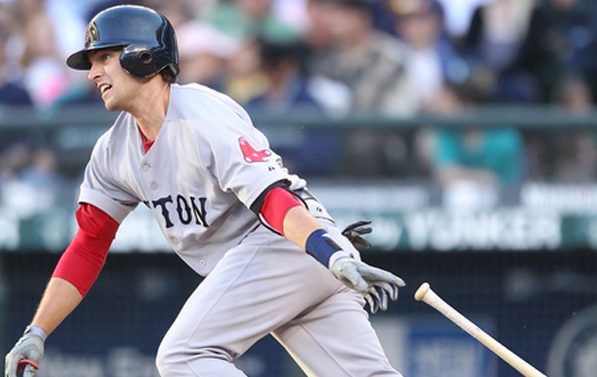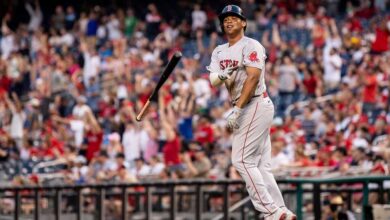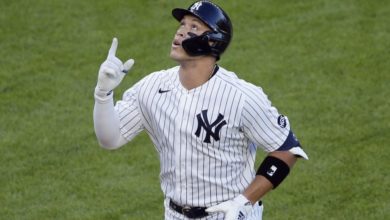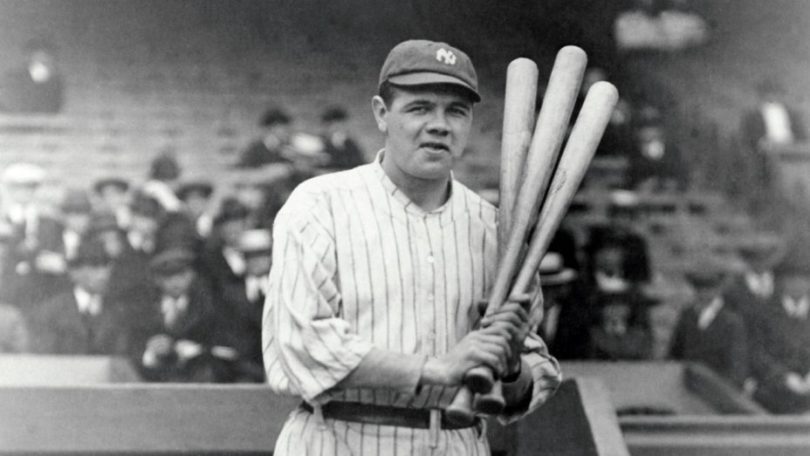

In a lot of ways, Jed Lowrie is a player made to be popular and successful in Boston. He’s scrappy (like Dustin Pedroia), can play all over the diamond (Kevin Youkilis) and is, supposedly, a better alternative to an overpaid shortstop (Marco Scutaro). The argument could be made that the Boston Red Sox’ current situation in the middle infield has some similarities to the Nomar Garciaparra/Orlando Cabrera conundrum from 2004. The differences, of course, were that switch was made at the trade deadline, rather than mid-April, and Scutaro is no Garciaparra. But, I digress.
Throughout spring training, Red Sox fans called for Lowrie over Scutaro full-time. On top of that, they often argued, Scutaro should be traded for … well, anybody really. Joe Blanton, some middle reliever, just dump the bum out of town. And, through the first 17 games of 2011, fans have been right.
- Lowrie: 11 games, .462 BA, 3 HR, 11 RBI, 0.9 WAR
- Scutaro: 11 games, .222 BA, 0 HR, 6 RBI, 0.2 WAR
Lowrie has taken his opportunity and run with it. At this point, he should be the starting shortstop. If the majority of Red Sox fans had their way, Scutaro would be sent packing for no reason other than he’s not Jed Lowrie. But, is that really a smart course?
In 2010, Scutaro played in a career-high 150 games (and a career high 695 plate appearances), and hit .275 with 11 HR and 56 RBI while batting all over the lineup. He played steady defense, and his 2.1 WAR rated 11th in all of Major League Baseball (in the neighborhood of Starlin Castro and Derek Jeter). Not too bad, right?
To continue on this tact, Jed Lowrie doesn’t have 695 plate appearances in his entire career. His career high was 306 as a rookie in 2008. Since then, wrist and forearm injuries, plus a long bout with mononucleosis last year, have kept him from being in the lineup steadily. There’s a three-year history here, so a couple healthy weeks isn’t enough to create any kind of solid data.
For his career, he’s a .268 hitter who’s never held the full-time shortstop job over an entire season, and has never hit more than nine home runs at the major-league level. Lowrie is a solid offensive player, no doubt, and the Red Sox should absolutely be putting him in the lineup as often as possible. However, Troy Tulowitzki mixed with Roy Hobbs mixed with Garciaparra (Nomahh!) he’s not. On top of that, his career to this point has shown he’s a player to create depth and match-up problems, rather than one who can be relied on to stay healthy.
With all that in mind, it would be foolhardy to trade the depth that Scutaro provides. He only makes $6.25 million, which, in Boston money, is chump change. He’s been in the majors for a long time and is 36, so is unlikely to create a clubhouse problem. He’s versatile, and the Sox are much more likely to get a useful season out of him than out of Middle Reliever X (they also have a good pitching staff at Pawtucket that can be farmed for bullpen depth).
Also, it would kill infield depth. Whomever of Scutaro and Lowrie isn’t playing is the utility infielder. If you trade Scutaro, who’s left? Jose Iglesias is touted as a tremendous defensive prospect, and will certainly be with the big club within a couple years, but his bat isn’t major-league ready.
This phenomenon has happened in Boston sports in the past with Brian Daubach, Doug Mirabelli (who can forget him getting a ride in a police car to Fenway to catch Tim Wakefield), Rich Garces and a hundred others.
So, as things go in Boston, a mountain’s being created out of a molehill. Lowrie is most certainly the more popular player in town than Scutaro, and he’s, in all likelihood, the better overall player now and moving ahead. But let’s take a step back, enjoy the legend while he’s healthy and see what happens.





